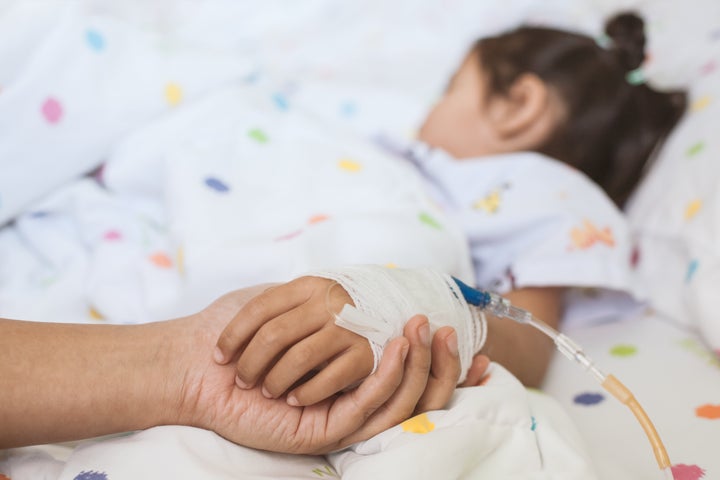
Parents need to be just as vigilant for sepsis as meningitis, the UK Sepsis Trust has warned, as new figures show hospital admissions in England have more than doubled in three years, with children particularly at risk.
The NHS Digital data shows there were 350,344 recorded hospital admissions with a first or second diagnosis of sepsis in 2017/18, up from 169,125 three years earlier. This includes 38,401 admissions among those aged four and under, up from 30,981 in 2015/16.
For all children and young people aged 24 and under, there were 48,647 admissions in 2017/18. This is a 32% rise on the 36,847 hospital admissions for sepsis for this age group in 2015/16.
[Read More: These are the symptoms of sepsis you need to know]
Sepsis is thought to kill 52,000 people a year in the UK. Parents who suspect sepsis symptoms – if their child looks mottled, bluish or pale, for example, is very lethargic or difficult to wake, feels abnormally cold to touch, is breathing very fast, has a seizure or a rash that does not fade – are urged to go to A&E.
Other warning signs in any age include high temperature or low temperature, finding it difficult to breathe, grunting, feeling very unwell and showing no interest in usual activities.
Dr Ron Daniels, chief executive of the UK Sepsis Trust, said several factors were behind the figures, including a rise in awareness of sepsis which has led to much better recording of patients with the condition.
But he said increasing antibiotic resistance was also fuelling cases of sepsis and everyone – including parents – should stay on high alert.
Daniels said the scale of the problem in children looks “alarming”, adding: “What this means is that parents need to continue to be aware of meningitis, but to arguably be even more aware of sepsis as it affects far more children and can be equally deadly.”
Dr Daniels said an increasingly ageing population also means more older people are now suffering from sepsis than before. Invasive procedures on the very young or very elderly, whose immune systems are compromised, can increase the risk of infection.
“A decade or two ago, infections such as urinary tract infections would be controlled by simple antibiotics – not so today,” Dr Daniels added. “If the antibiotic doesn’t begin to control the infection, it may become more complicated – ideal breeding grounds for the onset of sepsis.”
The NHS Digital data shows that among older people the rise in admissions went from 78,397 among those aged 75 to 84 in 2017/18, up from 32,846 in 2015/16. Among those aged 85 and over, there were 67,897 admissions in 2017/18, up from 25,014 in 2015/16.
The figures come as the Royal College of Emergency Medicine (RCEM) said a tool for tracking sepsis in children was not used as often as it should be and A&E departments were struggling to ensure youngsters suspected of having the condition were seen quickly enough and then reviewed by a senior doctor.
Celia Ingham Clark, medical director for clinical effectiveness at NHS England and NHS Improvement, said: “The NHS has become much better at spotting and treating sepsis quickly over the last few years, so even though more cases are being diagnosed, the chances of dying from it are falling.
“As part of the NHS Long Term Plan our work on sepsis and antimicrobial resistance is coming together to make sure that patients with serious infections get the right antibiotic at the right time, and antibiotics are not used where they won’t help, so we can reduce the risk of infections in the future becoming resistant to antibiotics.”